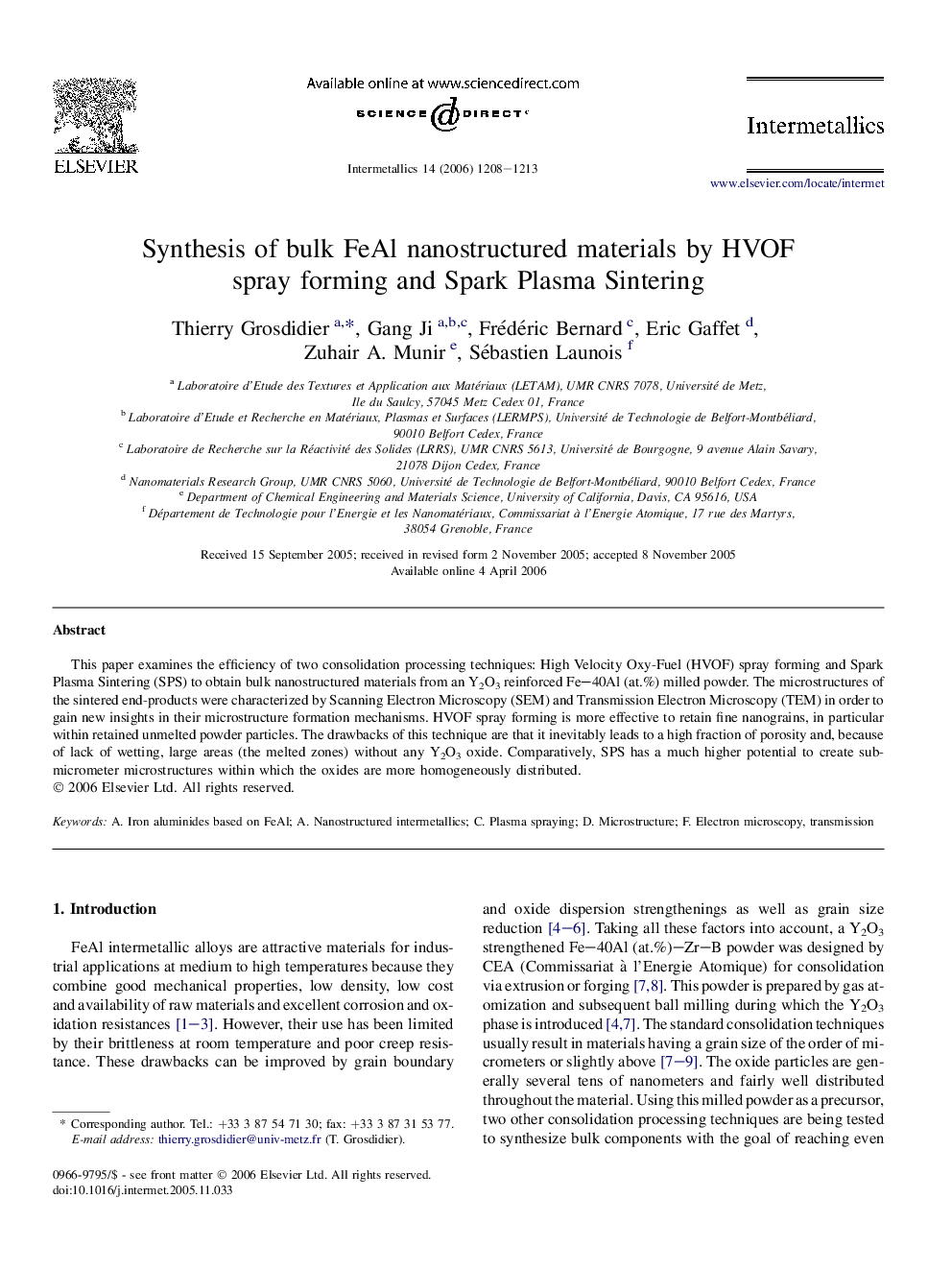| Article ID | Journal | Published Year | Pages | File Type |
|---|---|---|---|---|
| 1602073 | Intermetallics | 2006 | 6 Pages |
Abstract
This paper examines the efficiency of two consolidation processing techniques: High Velocity Oxy-Fuel (HVOF) spray forming and Spark Plasma Sintering (SPS) to obtain bulk nanostructured materials from an Y2O3 reinforced Fe-40Al (at.%) milled powder. The microstructures of the sintered end-products were characterized by Scanning Electron Microscopy (SEM) and Transmission Electron Microscopy (TEM) in order to gain new insights in their microstructure formation mechanisms. HVOF spray forming is more effective to retain fine nanograins, in particular within retained unmelted powder particles. The drawbacks of this technique are that it inevitably leads to a high fraction of porosity and, because of lack of wetting, large areas (the melted zones) without any Y2O3 oxide. Comparatively, SPS has a much higher potential to create sub-micrometer microstructures within which the oxides are more homogeneously distributed.
Keywords
Related Topics
Physical Sciences and Engineering
Materials Science
Metals and Alloys
Authors
Thierry Grosdidier, Gang Ji, Frédéric Bernard, Eric Gaffet, Zuhair A. Munir, Sébastien Launois,
